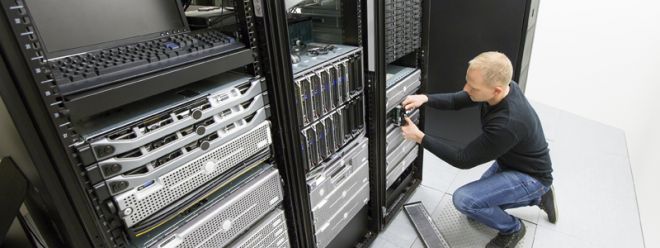A Complete Guide to Data Center Migration: Planning, Execution and Success Factors

Data center migrations are nerve-wracking, but with proper planning, you can ensure their success. Follow this guide to learn which tasks administrators can complete on their own and which parts require professional help.
Depending on the size of the data center, building a modern facility can take up to three years. After construction is complete, all existing operations must be transitioned from the current data center to the new one.
Moving operations, data, servers, IT equipment, and more to a new data center is often a large, one-time project that can be daunting, especially if operations cannot afford downtime or service interruptions. Data center administrators can complete the transition to a new facility on their own, but there are also professional relocation companies available.
Although data center migrations are stressful, with proper planning, they can be successful. The following information is a checklist of tasks that administrators can complete on their own and which parts require professional help. Regardless of the transition method chosen, administrators play an important role in it. Understanding all the steps involved is key to making the best decision.
Inventory and Device Configuration
Having a complete inventory of your physical and virtual assets is one of the most important things to do when moving to a new data center. Even if you already have an inventory of your assets, you should still review it. It is expensive to have a professional review your inventory. Data center infrastructure management and asset management software can also help build an inventory of your assets, which should cover the asset list, equipment configuration, and dependencies.
Key assets include the following:
• server
• Switches
• Storage arrays
• modem
• Installed racks and cabinets
• Wall panels
• Shelves
Be sure to record the equipment's make, model, serial and asset tag numbers, location (rack and RU number), network name, and purchase date, as well as the last software update date and version information.
Device Configuration
Set up columns for processor socket number and type, memory, hard drive or SSD size, number of network interface cards, operating system and application software, all information that can quickly replicate the device in the event of a failure.
Dependencies
Dependencies are the most difficult to accurately determine, especially in a virtualized environment. Administrators should ask themselves the following two questions:
1. If this device goes down, what other devices will also go down?
2. What other equipment in the data center is necessary for this equipment to perform all of its functions?
Every professional, such as network administrators, operating system administrators, storage experts, and server technicians, must be involved in answering these questions.
Estate Planning
Administrators use asset planning to inform the timing of equipment migrations and determine which assets must be replaced or duplicated to achieve a smooth transition.
Equipment in your current data center may be outdated. Evaluate the equipment in your data center at least a year before moving to a new facility. A year is plenty of time to budget for necessary equipment replacements and to discuss hardware leasing and purchasing terms with vendors.
When deciding between hardware leasing and purchasing, consider the following questions:
• Can an expiring lease be extended month-to-month until the move date?
• Can the vendor deliver new equipment to run in parallel with the old equipment before transition? This requires a switchover on a key date.
To ensure parallel operation of the network, a spare core switch is required during the migration. Data centers with redundant core switches should migrate half of them in advance, which can save costs but has certain risks.
To decide where in the data center you can and cannot afford downtime, determine which hardware runs critical applications and consider dependencies. It may be beneficial to have extra spares for some equipment.
To transition in a "leapfrog" fashion, pre-configure spare devices, install and activate them, then take the old devices offline and reconfigure them to replicate the other devices, a technique that maintains uninterrupted service with minimal investment. If replacing obsolete devices, make sure they are pre-configured, installed, and tested to avoid a lot of headaches.
Make sure the new machine room is ready
After construction is complete, the new data center should be tested by a third party that specializes in data center commissioning. Problems and defects will be difficult to fix after the transition. It is important to understand all new systems and facility configurations before moving to a new data center. If the new facility is not yet perfect, it is better to postpone the move rather than deal with problems after the move is complete.
Migration time
Often, migrations are scheduled over weekends, sometimes across holidays or consecutive weekends, depending on the size of the project, which can limit the availability of contractors, facilities staff, and vendor technicians. Arrange for outside support, either on-site or on-call, well in advance to have multiple options.
It is important to note that the relocation weekend is not the time for upgrades, software updates or patches. All upgrades and updates should be completed at least one day before the relocation, postponing any automatic updates planned for the weekend.
If employees share tasks with professional movers, make sure everyone knows their specific responsibilities, for example, who will remove and reinstall hardware and who will handle connection issues.
Professionals will install the disassembled hardware in special containers and transport it between locations via low-vibration vehicles. Administrators can move the hardware themselves, but there may be a risk of damaging the equipment. It is highly recommended that a professional moving company transport the hardware. Depending on the asset plan, spare hardware may be required.